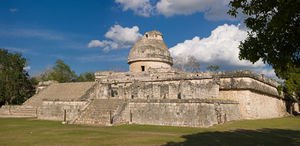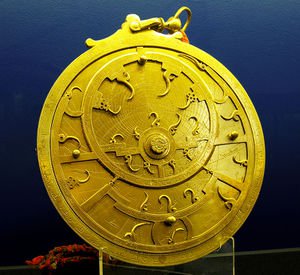How Did Astronomy Fundamentally Change Human History
We often think of astronomy as a type of academic discipline or hobby subject taken up by those interested in the night sky. While this is true, astronomy has fundamentally shaped human history as it allowed the understanding of the seasons and seaborne navigation. Additionally, to make a wider understanding of the movement of stars and celestial objects in general, a great understanding of mathematics was needed that allowed other developments, where even ideas of mapping and coordinate systems developed. The importance of astronomy to the past is attested because some ancient languages only went extinct after astronomical observations ceased. On the other hand, astronomy has the potential to shape our future in guiding future space exploration and possibly new worlds to explore for the modern world.
Ancient Astronomy
The night sky's basic observation across most of the latitudes people heavily occupy indicates that stars, the sun, and the night sky change during the year. This is an important pattern that many ancient societies understood, were cultures in the New and Old Worlds developed astronomical observations. This includes the ancient Maya, Aztecs, Egyptians, Babylonians, Greeks, Chinese, and others (Figure 1). Astronomy helped to distinguish seasonal changes that are important for agriculturally-based societies. Knowing when the autumn and planting season in northern latitudes, for example, indicate when it is safe to harvest and sow crops.[1]
However, there are many secondary benefits of this type of observation. First, knowing where the stars and sun will make it evident there is a recurrent pattern. This pattern often has observable mathematical properties that help ancient societies to develop ways to predict when astronomical events will occur. We see this in ancient Babylonia, where astronomical observations developed mathematical formulations to understand where planets and stars would align and when comets may reappear.[2]
Astronomy helped form both lunar and solar-based calendars, where ancient societies even understood that the solar year was slightly more than 365 days. Navigation of ship-borne trade before 1000 BCE was mostly confined to areas along the coast or regions that can more easily observe land. However, astronomy made it possible to navigate in open waters and during the night. Whereas early navigation depended on land features, understanding the position of stars allowed the Phoenicians and Greeks to colonize wide areas of the Mediterranean Sea in the 1st millennium BCE, spreading their cultures in wide areas. Babylon and wider Babylonia were one of the key regions for many ancient developments. This included the development of the zodiac signs, still utilized today, and even a coordinate system to identify the positioning of stars and constellations. A system for predicting eclipses was even developed, invented in Babylon, which is still utilized, called the Solaris system. The coordinate system developed was the eventual 60-based system we use to describe global navigation today.[3]
Medieval and Renaissance Developments in Astronomy
In the Middle East and Asia, astronomy had developed and retained knowledge from ancient periods to allow the development of accurate calendars and to make accurate predictions in the movement of celestial bodies. Astrolabes and other navigation equipment became commonly used to assist in observing the positioning of stars to inform sailors of their relative position, where such technologies derived from earlier, ancient observations (Figure 2). However, after the fall of Rome, astronomy had made limited or few advancements in Western Europe [4]
This changed by the 16th-17th centuries. Advancements in optics, made in the Islamic world by the early Medieval period, were then created into a telescope used later by Galileo Galilei to observe celestial bodies. Galileo's observations led to him seeing moons concerning other planets, craters on the moon, and many other observations. This, once again, led astronomy to become an important science that also led to other developments. In particular, physics in the 18th century began to be closely then associated with astronomy. Phases of planets in their rotation were noticed by Galileo, leading him to support Copernicus in his observation on planetary rotation.
Isaac Newton used calculus to explain gravity about planetary bodies. This helped Newton to develop his theory of gravity more fully. Mathematical laws now became how planetary and celestial motion was understood, leading to the fuller development of the field of physics as well.[5]
Modern Astronomy
Modern astronomy developed in the 19th century, where experiments and further observations led to the understanding of basic chemistry, such as understanding how hydrogen and helium formed the universe's basic components. Major recent advances have focused on understanding the expansion of the universe. This includes understanding the origin of the universe, and the big bang theory became a major discovery. These developments also led to the need for increased developments in various other technologies, including in developing exploratory satellites, telescopes, and computers to process data from a variety of developed sensors.[6]
Major Societal Influence of Astronomy and Summary
In the early developments of astronomy, observation of stars and planets led to the understanding of the change in seasons had clear patterns that could be predicted. This not only helped develop agriculture, but other impacts include integrating astronomical observations with religious calendars. Astronomical knowledge had a major influence on sea navigation, which led to increased long-distance sea trade routes and colonies. Calendars also became relatively accurate, helping to define both solar and lunar-based years for different societies.
Mathematics was developed to assist with predicting observations of planets and comets. This was initially done to assist in the worship of gods, but soon other benefits were found as mathematical principles were applied to other areas, including in measurements. Map-making was also something that may have been partially influenced by astronomy, as a coordinate system was already developed for understanding the location and positioning of the stars and constellations. The 60-degree based system used to describe the sky is now used today to describe map coordinates and locations.
In the Medieval and Renaissance period, the major achievements in astronomy assisted in fundamentally changing attitudes of seeing the Earth as the center of the solar system to being another planet. This helped pave the idea that scientific laws were governing the planets and Earth, increasing research and attempts to understand scientific law rather than accepting the only religious doctrine. One of the most significant achievements was the development of physics and utilizing physical theory such as gravity to explain orbits and the rotation of the planets and other celestial bodies. Observation of the planets also led to developing mathematical fields such as calculus to develop further, which is now used for many other fields.
More recently, modern astronomy has led to an understanding of fundamental qualities in physics and chemistry, where the understanding of basic components of the universe has helped shape the Earth. Modern theories such as the big bang have now helped explain how old and expansive the universe is. Technologies for modern astronomy include satellites and computing systems that have to be developed for ever-deeper understanding and observation, leading to technical developments in robotics, computing, and artificial systems as more recent developments have derived from astronomy.
References
- Jump up ↑ For more examples of ancient societies with knowledge of various astronomical principles, see: Ruggles, C. L. N. (2005). Ancient astronomy: an encyclopedia of cosmologies and myth. Santa Barbara, Calif: ABC-CLIO.
- Jump up ↑ For more on the development of mathematics and astronomy, see: Neugebauer, O. (1975). A history of ancient mathematical astronomy: in three parts. Berlin: Springer.
- Jump up ↑ For more on calendars and observations of eclipses, see: Lawson, R. M. (2004). Science in the ancient world: an encyclopedia. Santa Barbara, Calif: ABC-CLIO, pg. 32.
- Jump up ↑ For more on navigation and star positioning, see: Denny, M. (2012). The science of navigation: from dead reckoning to GPS. Baltimore: John Hopkins University Press.
- Jump up ↑ For more on the development of telescope development and planetary motion, see : Cole, G. H. A., & Woolfson, M. M. (2013). Planetary science: the science of planets around stars. (2nd ed). Boca Raton: CRC Press.
- Jump up ↑ For more on 19th century and later development in astronomy, see: Krebs, R. E. (2004). Groundbreaking scientific experiments, inventions, and discoveries of the Middle Ages and the Renaissance. Westport, CT: Greenwood Press.

